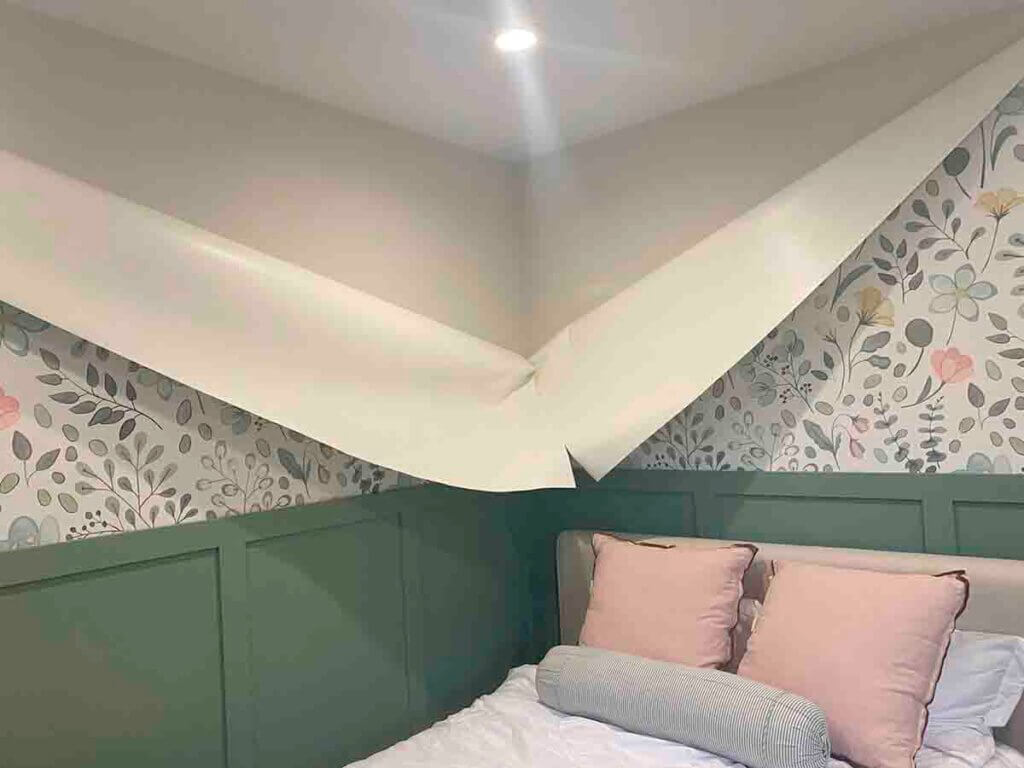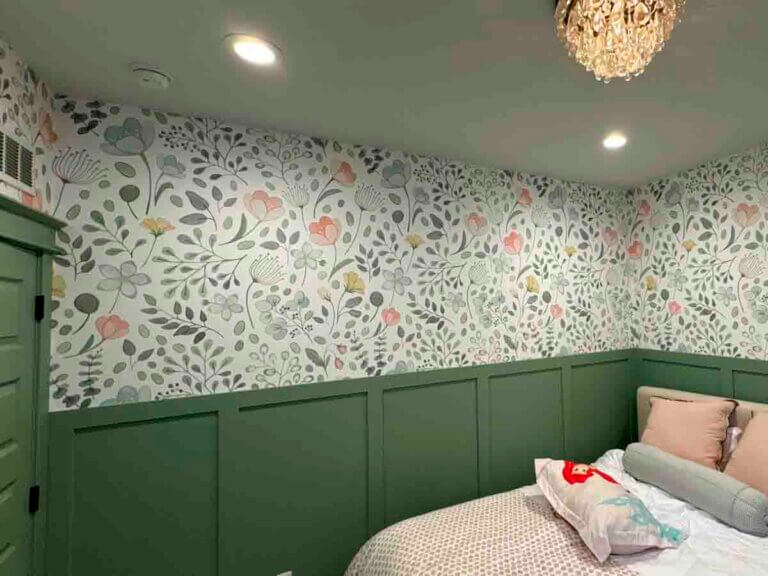Home » Caution: Heat and peel and stick wallpaper!
Updated June 2025
Peel-and-stick wallpaper has become a go-to solution for quick and affordable home upgrades. Its ease of use and wide design variety make it especially appealing for DIY decorators. However, in climates like Colorado—where direct sun exposure and forced-air heating are common—this type of wallpaper can create unexpected issues.

Table of Contents
ToggleThe number one rule for peel-and-stick wallpaper: smooth, clean surfaces only. Any bump, dust, or texture can prevent proper adhesion.
Before installation:
Fill holes and cracks
Sand lightly to remove texture
Wipe walls clean with a dry cloth
Peel-and-stick wallpaper may fail in hot or dry indoor conditions, such as:
Walls exposed to direct sunlight
Areas near baseboard heaters or forced-air vents
Warm attics or sunrooms
Tip: In such spaces, choose traditional non-woven or vinyl wallpaper for better longevity.
Although marketed as removable, peel-and-stick wallpaper can still:
Leave adhesive residue
Tear drywall or paint
Require patching or repainting afterward
Always factor in potential repair work when planning your design.
It’s commonly believed that peel-and-stick wallpaper is rental-friendly. But:
Adhesive may harden over time
Removal can tear drywall or paint
Residue often requires sanding or repainting
The takeaway? Always plan for some level of wall repair after removal.
Prepare your walls: Smooth, patch, and clean thoroughly.
Avoid heat sources: Don’t install near direct sun or heating vents.
Expect removal work: Have tools or paint ready for repairs.

We work only with trusted brands that offer quality and reliability. Our recommended manufacturers include:
Years of installation experience across Colorado confirm that good materials are essential to long-lasting, beautiful results.
Enjoy The Wall installs and advises on wallpaper throughout the state, with a focus on the Denver metro area:
Denver
Aurora
Lakewood
Centennial
Castle Rock
Boulder
Colorado Springs
Yes, but test a small patch first to ensure safe removal.
Only if there is no direct steam contact—consider vinyl for better moisture resistance.
No. It requires perfectly smooth surfaces to adhere properly.
Want to try peel-and-stick wallpaper without the hassle? Let our experts help you choose the right product and ensure proper prep and installation across the Denver metro area and greater Colorado.